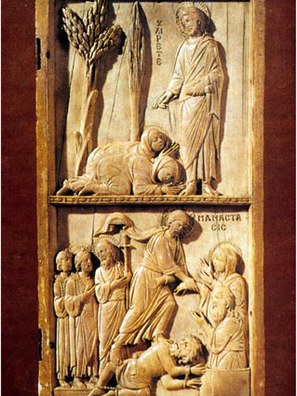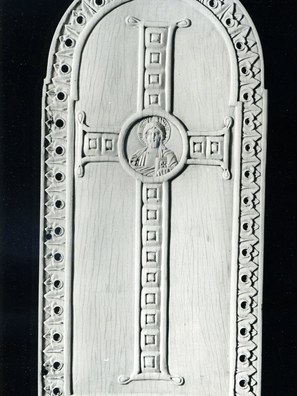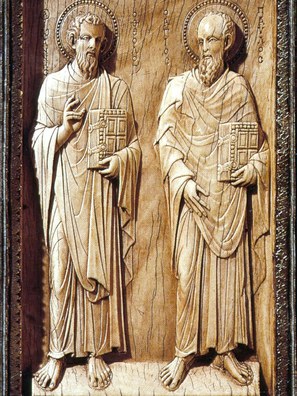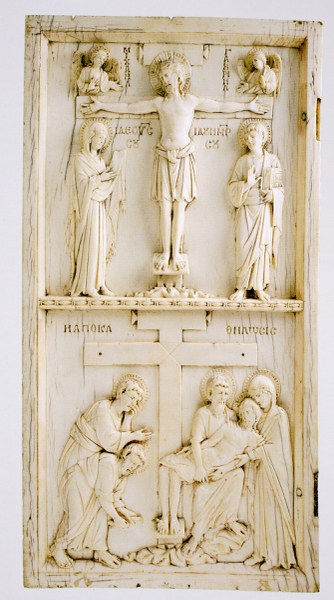German Ivories
During the 1930s (until the outbreak of the Second World War in 1939), the Blisses, Royall Tyler and the Swiss amateur art broker, Hermann Fiedler, believed that German museums would de-accession important Byzantine ivories due to the Nazi interest in selling non-Arian artworks. The Blisses and Tyler came to be particularly interested in acquiring four ivories—none of which they were able to obtain. One of the ivories, the diptych leaf representing a jeweled cross with the bust of Christ in the Schlossmuseum, Gotha, was of particular interest because the Blisses had acquired its pendant, BZ.1937.18. The ivories that the Blisses tried to acquire were:
(1) the left diptych panel with the Crucifixion and the Deposition, ivory, mid-tenth century, August Kestner Museum, Hannover;
(2) its pendant, the right diptych panel with Christ Meeting the Marys in the Garden and the Descent into Hell, ivory, mid-tenth century, Staatliche Kunstsammlungen, Grünes Gewölbe, Dresden;
(3) the panel of a diptych with a gemmed cross centered by a medallion of the blessing Christ, ivory, tenth century, Stiftung Schloss Friedenstein, Schlossmuseum, Gotha; and
(4) the ivory panel representing John the Evangelist and Saint Paul, ivory, mid-tenth century, Staatliche Kunstsammlungen, Grünes Gewölbe, Dresden.



Adolph Goldschmidt and Kurt Weitzmann, Die byzantinischen Elfenbeinskulpturen des X.–XIII. Jahrhunderts, vol. 2, Reliefs (Berlin: Bruno Cassirer, 1934): 36, 37 and 39, nos. 37, 40, 41, and 45, pls. 14, 17 and 19.
The Metropolitan Museum of Art, The Glory of Byzantium, Art and Culture of the Middle Byzantine Era AD 843–1261 (New York: Metropolitan Museum of Art, 1997), 146–47, no 92.
